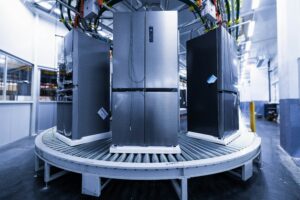
©Image Source via Canva.com
Binit Revolutionizes Waste Management With AI Integration
June 3, 2024
Innovations in artificial intelligence hardware have faced scrutiny and are often categorized as inadequate. However, Binit, a Finnish startup pioneering AI integration in waste management, has been pushing past these boundaries. Its novel approach involves utilizing large language models’ (LLMs) image-processing abilities to streamline household trash tracking.
For a long time, entrepreneurs have been intrigued by the potential of AI to enhance recycling efficiency, both in municipal and commercial settings. Startups like Greyparrot, TrashBot, and Glacier have made strides in this space. However, Binit’s founder, Borut Grgic, sees a fresh opportunity in household trash tracking, believing it to be a relatively unexplored area.
“We’re producing the first household waste tracker,” he said, comparing the AI product to one that consumers may use for sleep tracking, except that Binit’s product is to track trash-tossing habits. “It’s a camera vision technology that is backed by a neural network. So we’re tapping the LLMs for recognition of regular household waste objects.”
During the pandemic, the emerging startup captured attention with its innovative approach. After securing nearly $3 million from an angel investor, this startup is on a mission to revolutionize kitchen aesthetics and functionality. Its AI hardware, crafted to blend seamlessly into kitchen decor, can be mounted on cabinets or walls, strategically positioned near the heart of bin-related activities. Sporting onboard cameras and sensors, this battery-powered gadget springs to life when approached, allowing users to effortlessly scan items before disposal.
Grgic emphasized the company’s reliance on the integration with commercial LLMs, particularly OpenAI’s GPT, for image recognition. Binit’s approach involves monitoring household waste and offering analytics, feedback, and gamified features through an app. This includes features like a weekly trash score, all geared toward motivating users to minimize their waste output.
The Binit founder is puzzled by how well the system works, saying he doesn’t know why. He’s not sure if OpenAI’s training data had a lot of trash images or if it’s just good at recognizing things because it’s seen so much data. He says it’s really accurate, suggesting the good results with OpenAI’s model might be because they’re scanning common objects.
Recent News








